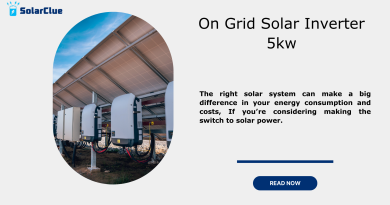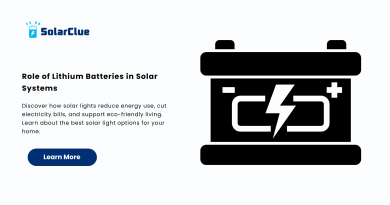how to make a solar panel generator
A DIY solar panel generator is a portable, off-grid power solution that can be used for various purposes, such as powering small appliances, charging devices, or providing backup power during outages. Building your own solar generator can be a rewarding and cost-effective way to harness solar energy. This guide will walk you through the necessary materials, tools, and steps to assemble your own solar generator, while also addressing safety precautions, potential challenges, and comparisons to commercial options.
Table of Contents
- 1 Materials and Tools Required for a DIY Solar Panel Generator
- 2 Step-by-Step Construction Process
- 3 Safety Precautions and Troubleshooting Tips
- 4 Potential Challenges and Limitations
- 5 Comparing DIY Generators to Commercially Available Options
- 6 Legal and Regulatory Considerations
- 7 The Future of DIY Solar Generators
- 8 The Environmental Impact of DIY Solar Generators
- 9 Case Studies of Successful DIY Solar Generators
- 10 Table: Comparison of Battery Types for Solar Generators
- 11 FAQs
Materials and Tools Required for a DIY Solar Panel Generator
Materials:
- Solar Panels:
- Typically, 100W to 300W panels depending on your power needs.
- Battery Storage:
- Deep-cycle batteries like AGM, Gel, or Lithium-ion with a capacity of at least 50Ah.
- Inverter:
- A 300W to 1000W pure sine wave inverter to convert DC power to AC power.
- Charge Controller:
- A PWM or MPPT charge controller to regulate the voltage and current from the solar panels.
- Wiring and Connectors:
- Properly rated wires, MC4 connectors, and battery terminals.
- Battery Box:
- A sturdy, insulated box to safely house the battery.
- Fuses and Circuit Breakers:
- To protect the system from overcurrent and short circuits.
- Solar Panel Mounting Brackets:
- For securing the panels to the desired location.
- Cooling Fans (Optional):
- For keeping the components cool, especially the inverter.
Tools:
- Screwdriver Set:
- For assembling components and making electrical connections.
- Wire Stripper/Cutter:
- To prepare wires for connections.
- Multimeter:
- For measuring voltage, current, and continuity.
- Drill and Bits:
- For mounting the solar panels and securing components.
- Soldering Iron and Solder:
- For making secure electrical connections if needed.
- Wrench Set:
- For tightening bolts and nuts.
Step-by-Step Construction Process
1. Plan Your System:
- Determine your power requirements by listing the devices you plan to power and calculating their total wattage.
- Decide on the system voltage (12V, 24V, or 48V) based on your power needs and available components.
2. Assemble the Battery Bank:
- Place the batteries in the battery box and connect them in series or parallel to achieve the desired voltage and capacity.
- Use properly rated cables and ensure connections are secure and insulated.
3. Install the Charge Controller:
- Mount the charge controller near the battery bank and connect it to the battery terminals.
- Ensure correct polarity (positive to positive, negative to negative) to avoid damage.
4. Mount the Solar Panels:
- Secure the solar panels to a mounting structure or portable frame using brackets.
- Position the panels to maximize sunlight exposure, typically facing south in the Northern Hemisphere.
5. Wire the Solar Panels to the Charge Controller:
- Use MC4 connectors and appropriate gauge wire to connect the panels in series or parallel.
- Run the wires from the panels to the input terminals of the charge controller.
6. Connect the Inverter:
- Wire the inverter to the battery bank, ensuring that the cables are thick enough to handle the current.
- Secure the connections and check for proper polarity.
7. Test the System:
- Use a multimeter to verify the voltage at various points in the system.
- Turn on the inverter and test the output by connecting a small load, such as a light bulb or phone charger.
8. Final Assembly and Safety Check:
- Secure all components in their respective positions, ensuring no loose wires or exposed connections.
- Install fuses or circuit breakers between the panels, charge controller, batteries, and inverter for safety.
Safety Precautions and Troubleshooting Tips
Safety Precautions:
- Work in a Well-Ventilated Area:
- Batteries can emit gases, and soldering can produce fumes.
- Avoid Short Circuits:
- Double-check all connections and use insulated tools.
- Use Proper Protective Gear:
- Wear gloves, safety glasses, and avoid loose clothing.
- Follow Manufacturer Instructions:
- Adhere to the guidelines provided with each component.
Troubleshooting Tips:
- System Not Powering On:
- Check all connections, ensure the battery is charged, and verify that the inverter is functioning.
- Low Power Output:
- Inspect the solar panels for shading or dirt and clean them if necessary.
- Overheating Components:
- Ensure adequate ventilation and consider adding cooling fans.
Potential Challenges and Limitations
- Efficiency Losses:
- DIY solar generators may not be as efficient as commercial units due to potential inefficiencies in wiring and component matching.
- Limited Power Capacity:
- The power output of a DIY generator is limited by the size of the solar panels and battery storage, which may not be sufficient for high-power appliances.
- Durability Concerns:
- DIY generators may lack the ruggedness and weather resistance of commercial models.
- Technical Skills Required:
- Building a solar generator requires basic electrical knowledge and hands-on skills.
Comparing DIY Generators to Commercially Available Options
| Aspect | DIY Solar Generator | Commercial Solar Generator |
|---|---|---|
| Cost | Lower initial cost, but depends on components | Higher initial cost, but includes all components |
| Customization | Highly customizable based on needs | Limited to pre-configured models |
| Efficiency | Varies, may be lower due to mismatched components | Optimized for efficiency |
| Durability | Depends on build quality | Built for durability and reliability |
| Warranty | No warranty on DIY setup | Typically includes warranty on components |
| Ease of Use | Requires assembly and technical knowledge | Plug-and-play, ready to use |
Legal and Regulatory Considerations
- Permits and Inspections:
- Check local regulations to determine if you need permits for setting up a solar generator.
- Grid-Tied Systems:
- If you plan to connect the generator to the grid, ensure compliance with utility company requirements.
- Component Certifications:
- Use certified components (e.g., UL-listed) to ensure safety and reliability.
The Future of DIY Solar Generators
- Advancements in Solar Technology:
- As solar technology improves, DIY generators may become more efficient and accessible, with better components available at lower costs.
- Open-Source Designs:
- The growing maker community is likely to continue developing and sharing innovative DIY solar generator designs.
- Integration with Smart Technology:
- Future DIY generators may include smart controllers and monitoring systems, allowing for remote management and optimization.
The Environmental Impact of DIY Solar Generators
- Reduction in Carbon Footprint:
- Using solar power reduces reliance on fossil fuels, lowering your carbon footprint.
- Sustainable Energy Source:
- Solar generators provide a renewable energy source, contributing to sustainability.
- Resource Consideration:
- While DIY generators have an upfront environmental impact due to the production of components, they offer long-term environmental benefits through clean energy generation.
Case Studies of Successful DIY Solar Generators
Case Study 1: Off-Grid Cabin Power Supply
- Setup: 200W solar panel with a 100Ah lithium battery and 500W pure sine wave inverter.
- Outcome: Provided reliable power for lighting, phone charging, and a small refrigerator in an off-grid cabin.
Case Study 2: Emergency Backup Power for Home
- Setup: 300W solar panel system with a 150Ah AGM battery and 1000W inverter.
- Outcome: Successfully powered essential appliances during a power outage, including a laptop, phone, and lights.
Table: Comparison of Battery Types for Solar Generators
| Battery Type | Capacity | Lifespan | Cost | Best For |
|---|---|---|---|---|
| AGM | Moderate | 3-5 years | Medium | General use, moderate cost |
| Gel | Moderate | 4-6 years | Higher | Deep discharge, lower maintenance |
| Lithium-ion | High | 10+ years | Highest | High capacity, long lifespan |
FAQs
1. How much does it cost to build a DIY solar generator?
- The cost varies depending on the components used but typically ranges from ₹20,000 to ₹50,000.
2. Can a DIY solar generator power my entire home?
- A DIY generator is usually designed for small-scale applications and may not be sufficient to power an entire home.
3. Do I need technical knowledge to build a solar generator?
- Basic electrical knowledge is required, including understanding circuits, voltage, and safe wiring practices.
4. How long will a DIY solar generator last?
- The lifespan depends on the components used, particularly the battery. Proper maintenance can extend the system’s life.


